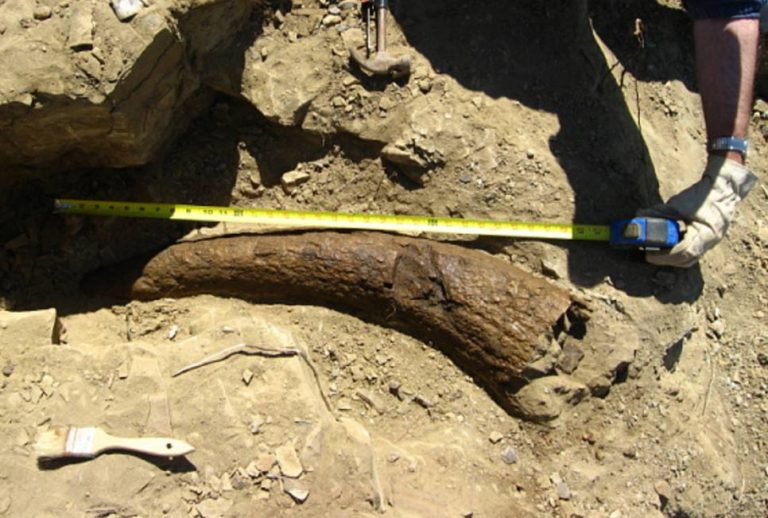A Triceratops brow horn discovered in Dawson County, Montana, has been controversially dated to around 33,500 years, challenging the view that dinosaurs died out around 65 million years ago. The finding radically suggests that early humans may have once walked the earth with the fearsome reptiles thousands of years ago.
The Triceratops brow horn was excavated in May 2012 and stored at the Glendive Dinosaur and Fossil Museum. The Museum, which has been in cooperation since 2005 with the Paleochronology Group, a team of consultants in geology, paleontology, chemistry, engineering, and education, sent a sample of the outer portion of the Triceratops brow horn to Head of the Paleochronology Group Hugh Miller, at his request, in order to carry out Carbon-14 dating. Mr Miller sent the sample to the University of Georgia, Center for Applied Isotope Studies, for this purpose. The sample was divided at the lab into two fractions with the “bulk” or collagen break down products yielding an age of 33,570 ± 120 years and the carbonate fraction of bone bioapatite yielding an age of 41,010 ± 220 years [UGAMS-11752 & 11752a]. Mr. Miller told Ancient Origins that it is always desirable to carbon-14 date several fractions to minimize the possibility of errors, which Miller requested, and that essential concordance was achieved in the 1000’s of years as with all bone fractions of ten other dinosaurs.
Where Social Media is Suppressed (infographic)
Triceratops, a name meaning “three-horned face”, is a genus of herbivorous ceratopsid dinosaur that is said to have first appeared during the late Maastrichtian stage of the late Cretaceous period, about 68 million years ago in what is now North America, and became extinct in the Cretaceous–Paleogene extinction event 66 million years ago. However, scientists from the Paleochronology Group, who perform research relating to “anomalies of science”, maintain that dinosaurs did not die out millions of years ago and that there is substantial evidence that they were still alive as recently as 23,000 years ago.
Read more: Ancient Origins
Ask me anything
Explore related questions





